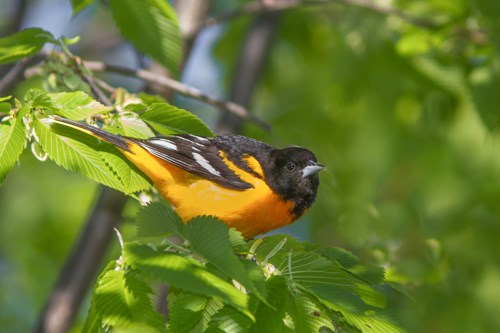
NPS/Gordon Dietzman IntroductionBaltimore oriole, northern oriole. They are the same bird, but why different names? Baltimore orioles look different than the closely related Bullock’s Orioles, but these two birds can interbreed leading some ornithologists to argue that they are the same species. Were they really two species or just one? After some deliberation, ornithologists dropped both names and collectively called the two birds Northern Orioles, to reflect their presumed close relation. Then researchers discovered, using recently developed DNA analysis, that Bullock’s orioles are more closely related to streak-backed orioles than they are to Baltimore orioles. That led researchers to suggest that instead of “lumping” Baltimore and Bullock’s together that the northern oriole once again be “split” apart. As a result, we are back to using the name Baltimore Oriole for this bird. Name changes may be frustrating for casual birders, but those changes reflect our greater understanding of the complex, natural world in which we live. Regardless of what we call these birds, they are beautiful birds that grace our yards, parks, and forests with their colorful presence and melodious songs. Fascinating Facts
Identification
| |
Last updated: February 25, 2022
